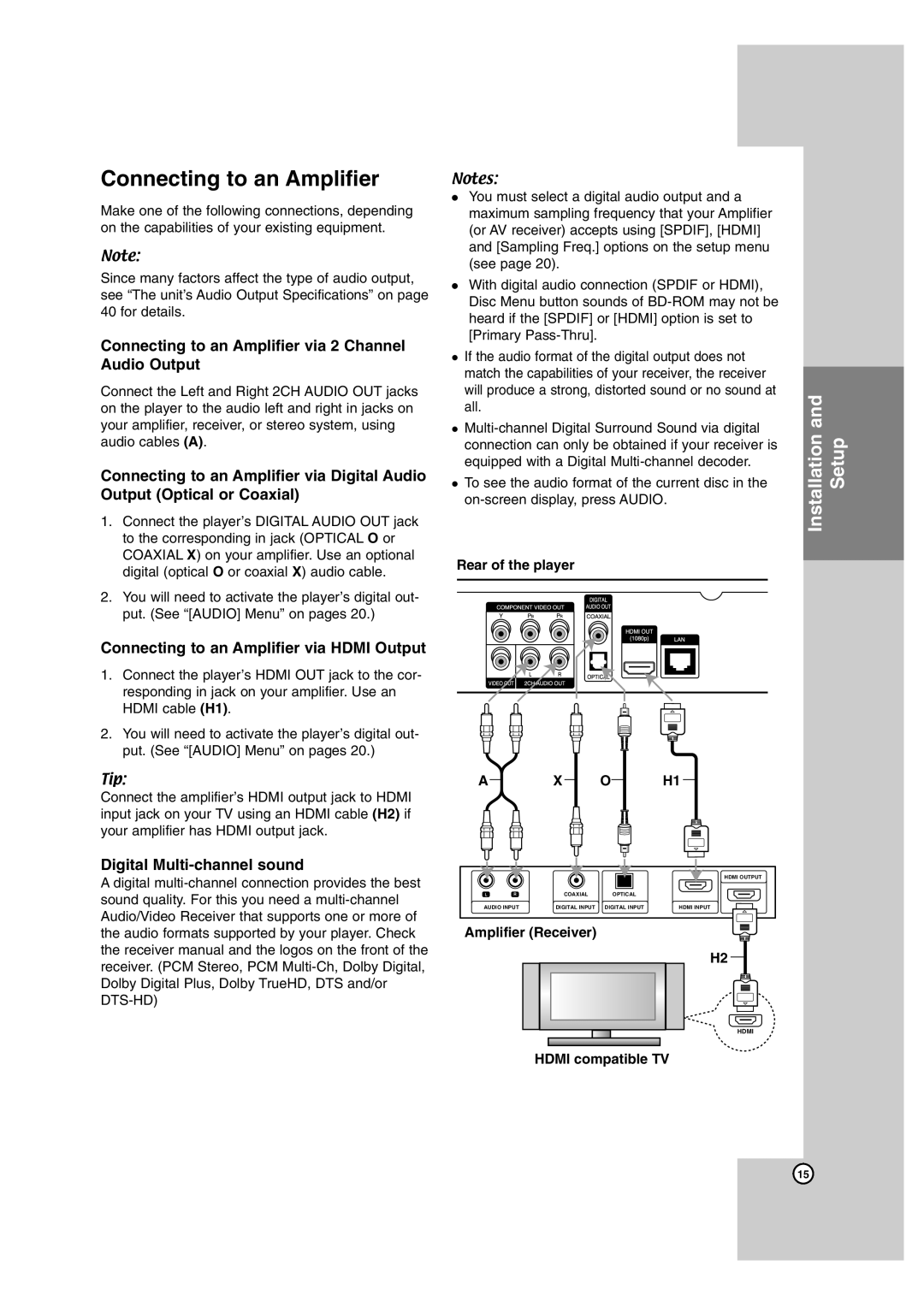
Connecting to an Amplifier
Make one of the following connections, depending on the capabilities of your existing equipment.
Note:
Since many factors affect the type of audio output, see “The unit’s Audio Output Specifications” on page 40 for details.
Connecting to an Amplifier via 2 Channel Audio Output
Connect the Left and Right 2CH AUDIO OUT jacks on the player to the audio left and right in jacks on your amplifier, receiver, or stereo system, using audio cables (A).
Connecting to an Amplifier via Digital Audio Output (Optical or Coaxial)
1.Connect the player’s DIGITAL AUDIO OUT jack to the corresponding in jack (OPTICAL O or COAXIAL X) on your amplifier. Use an optional digital (optical O or coaxial X) audio cable.
2.You will need to activate the player’s digital out- put. (See “[AUDIO] Menu” on pages 20.)
Connecting to an Amplifier via HDMI Output
1.Connect the player’s HDMI OUT jack to the cor- responding in jack on your amplifier. Use an HDMI cable (H1).
2.You will need to activate the player’s digital out- put. (See “[AUDIO] Menu” on pages 20.)
Tip:
Connect the amplifier’s HDMI output jack to HDMI input jack on your TV using an HDMI cable (H2) if your amplifier has HDMI output jack.
Digital Multi-channel sound
A digital
Notes:
You must select a digital audio output and a maximum sampling frequency that your Amplifier (or AV receiver) accepts using [SPDIF], [HDMI] and [Sampling Freq.] options on the setup menu (see page 20).
With digital audio connection (SPDIF or HDMI), Disc Menu button sounds of
If the audio format of the digital output does not match the capabilities of your receiver, the receiver will produce a strong, distorted sound or no sound at all.
To see the audio format of the current disc in the
Rear of the player
A |
| X |
| O |
| H1 |
|
|
| ||||
|
|
| ||||
|
|
|
|
|
|
|
HDMI OUTPUT
L | R | COAXIAL | OPTICAL |
|
AUDIO INPUT | DIGITAL INPUT | DIGITAL INPUT | HDMI INPUT | |
Amplifier (Receiver)
H2 ![]()
HDMI
HDMI compatible TV
Installation and Setup
15
